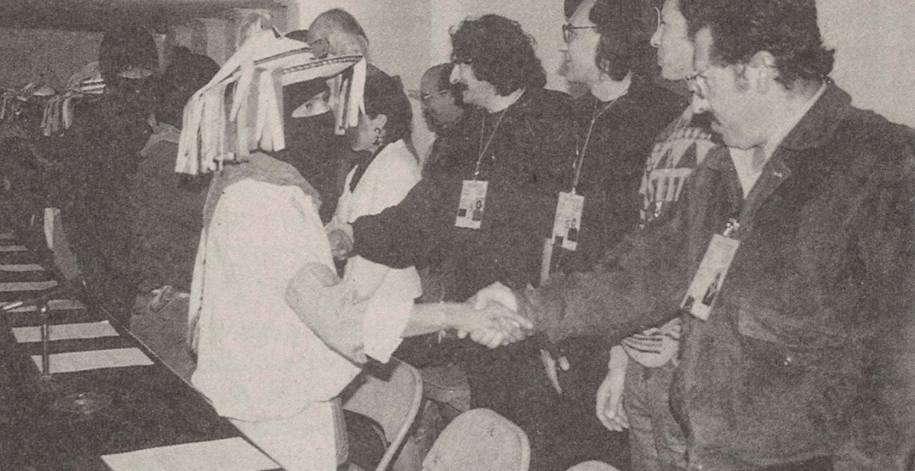Magdalena Gómez
In 2001, on the occasion of the Senate ruling that led to the indigenous counter-reform in violation of the San Andres Accords, I published a text entitled “The mutilated reform” (La Jornada, 26/4/2001), in which I gave an account of the distortions introduced into what was the initiative presented by then President Vicente Fox, known as Cocopa, emanating from the negotiation process between the Zapatista Army of National Liberation (EZLN) and the federal government. Today, 23 years later, last February 5, the federal Executive presented 18 constitutional reform initiatives, among them one related to indigenous peoples based on Article 2 of the aforementioned counter-reform.
Here it is important to distinguish it from the so-called compliance with the San Andres Accords, which although not mentioned in the initiative, have been mentioned by indigenous organizations that have participated in a process promoted by the National Institute of Indigenous Peoples (INPI) through forums throughout the country that concluded in a document called Proposal for Constitutional Reform. This is a political construct unrelated to the process initiated in 1994. Consequently, neither the EZLN nor the National Indigenous Congress are part of the same, which, by the way, was developed four years ago and the proposal docuement was delivered to the President of the Republic in two public events; the second one, in 2021, and no response had been given. The initiative acknowledges their contribution in a footnote. It was in this strategy, on the tail end of the current six-year term, that the initiative on the subject we are addressing was included, and that in light of the document that was delivered to the President, it does not correspond to the original document, except for some isolated aspects.

Before doing so, it is important to consider that in the government of the so-called 4T, neoliberalism is spoken of in the past and it was stated that the block of initiatives constitute a sort of recovery of the dignity of the Constitution. It has also been recognized that Congress does not have the qualified majority required for the approval of constitutional reforms. It is precisely from this perspective that we leave a question: why was the reform to the 27th Constitution that Salinas introduced in 1992 not included, along with a meager paragraph in Article 4 of the Constitution that took into account the obvious pluricultural composition of the Mexican nation? Since then I have affirmed that the true indigenous reform was the one that placed the land in the free market and destroyed one of the pillars of the 1917 Constitution.
In the statement of motives, as a government report, the policy and resources directed to indigenous peoples are taken up again, and in the legal account, the aforementioned reform of 1992 is mentioned without comment. The worst part is that it is quoted: “That same year (1992) the second paragraph was added to section 7 of article 27 of the Constitution: the law will protect the integrity of the lands of indigenous groups.” And it makes no mention that upon the immediate enactment of the new agrarian law, an article stated that the integrity of the lands would be protected when the law regulating the fourth paragraph of the Constitution was issued. Such a law did not exist.
It continues its account: “On August 14, 2001, the reform to Article 2 of the Constitution was published to recognize a set of individual and collective rights of indigenous peoples.” Nothing of the process background and its implication. It adds that on August 9, 2019, the reform to article two of the Constitution was published in which section C was added to recognize Afro-Mexican peoples and communities as part of the pluricultural composition of the nation.
The initiative is broad. It contains elements that could well remain in the law; however, it should be noted that one of the fundamental corrections is that of recognizing indigenous peoples as subjects of public rights instead of the public interest as was assigned to them in 2001, and that it addresses the issue of the implication that such a status has for direct access to public resources. The contradiction of the regulation of self-determination and autonomy in the federal entities is still present when the central issues related to natural resources are under federal jurisdiction.
It is noteworthy that the direct reference to the 2011 reform to Article 1, which placed international human rights conventions as a direct reference of interpretation with the constitutional text, is omitted. Therefore, Convention 169 is the source of several of the references to rights, especially the right to consultation. We do not know if the legislative marketing will favor the approval of this initiative, but what is clear is that it does not rectify the mutilations of 2001 and pretends to address the proposal promoted by the INPI and the indigenous people who were involved in that process.
Original text published in La Jornada on February 14th, 2024.
Translated by Schools for Chiapas.
